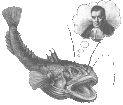UW Aquatic & Fishery Sciences Quantitative Seminar
Aimee Fullerton
Fish Ecology Division, NOAA
Spatiotemporally variable thermal landscapes and implications for Pacific salmon in a changing climate
Abstract
Understanding spatial and temporal patterns in water temperature will be essential for evaluating vulnerability of salmon to future climate and for identifying and protecting diverse thermal habitats. We used high-resolution remotely sensed water temperature data for over 16,000 km of 2nd to 7th-order rivers throughout the Pacific Northwest and California to evaluate spatial patterns of summertime water temperature at multiple spatial scales and to consider how these patterns may change. We found a diverse and geographically distributed suite of whole-river spatial patterns. About half of rivers warmed asymptotically in a downstream direction, whereas the rest exhibited complex and unique spatial patterns. Patterns were associated with both broad-scale hydroclimatic variables as well as characteristics unique to each basin. Within-river thermal heterogeneity patterns were highly river-specific, but cool patches were generally large enough for juvenile rearing and for resting during migration, and the distance between patches was within the movement capabilities of both juvenile and adult salmon. We found considerable thermal heterogeneity at fine spatial scales that may be important to fish that would be missed if data were analyzed at coarser scales. Climate change will cause warmer temperatures overall, but thermal heterogeneity patterns may be less responsive in the future for many rivers. We used empirical data in one watershed to generate spatiotemporally explicit predictions of water temperature and considered how our understanding of thermal regimes is shaped by the way we summarize data (e.g., minimum, mean, maximum, variance). Spatial patterns of mean water temperature across the watershed were very different than spatial patterns for, say, variance in water temperature during months when fish eggs incubate. Using data for 2015, a warm, dry year suggestive of conditions that will occur more often given climate change, we found differences in spatiotemporal patterns from more typical years that may be important to fish.

